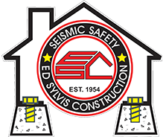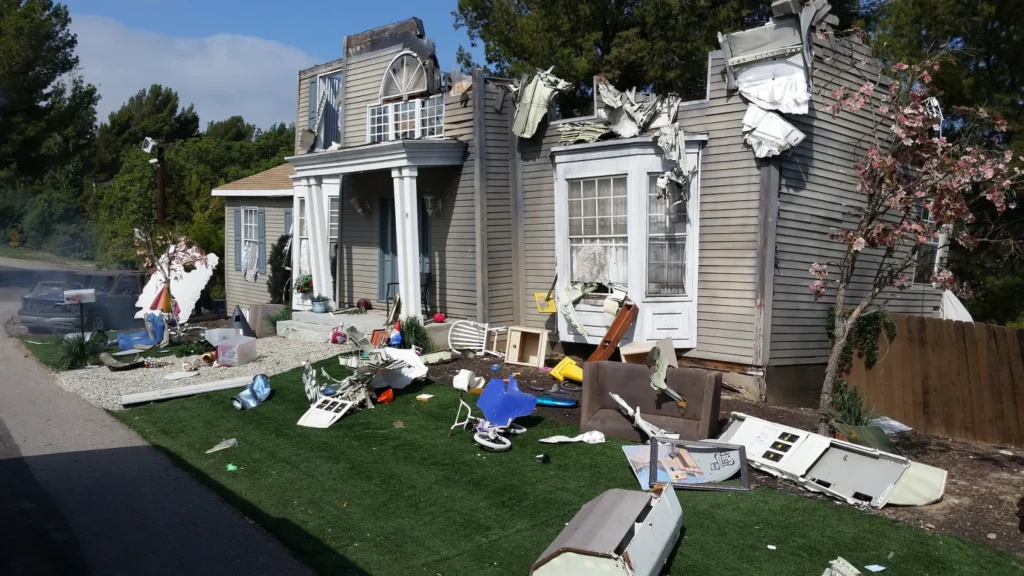No matter how evolved humans have become, the forces of nature still hold the upper hand. Earthquakes are one of the most destructive forces of mother earth, which also leads to other catastrophic events such as tsunamis, landslides, fault rupture, and fire. We have witnessed several mega earthquakes in the past, where the major ones have produced lots of casualties and property losses.
So what are damages associated with earthquakes? How can we ensure less destruction? What is earthquake retrofitting?
If you have these questions in mind, you have landed on the right page. In this article, we will discuss earthquake damage and learn ways to reduce earthquake hazards and ensure seismic safety.
For professional help and advice, you can visit Seismic Safety and get a more secure solution for all your needs.
Let us first learn about how earthquakes cause damage.
How Earthquakes Cause Damage To Home Structures And Foundations
Earthquakes are known to damage home structures and foundations at will. The process begins with violent shaking of the earth, which can trigger landslides, rupture the surface, and promote liquefaction. Below are some of the common outcomes of a severe earthquake.
1. Structural Failure
When there is an earthquake, the ground’s vibrations and shaking trigger other severe threats, such as landslides and liquefaction that causes further damage. The seismic waves that pass beneath the roads, buildings, and other structures produce maximum impact and destruction.
2. Ground Displacement And Surface Rupture
One of the primary hazards of an earthquake is surface rapture. The horizontal and vertical movement of a ruptured fault can cause damage to the surface. On the other hand, ground displacement affects significantly large areas and can induce damage to home structures and foundations.
3. Landslides
One of the common after-effects of an earthquake is mudslides and landslides. If your house is near a water-soaked area, an earthquake can trigger landslides and mudslides, damaging your home structure. Additionally, it causes severe damage to utility lines and block roads.
4. Tsunamis
If your house is near a large body of water, an earthquake can trigger tsunamis that make a devastating landfall and damage infrastructure and properties.
5. Liquefaction
Liquefaction is one of the biggest causes of damage to home structure and foundations as it turns loose soil into a liquid as the earth shakes. It can result in the collapse of home structures and their foundations.
6. Fires
Violent ground shaking also leads to fire accidents. When an earthquake occurs, gas and electrical lines get dislodged, which raises the risk of starting a fire as gas sets free from the pipes. Past incidents have proven this fact, and it is a severe concern that induces damage to home structures and foundations.
How We Can Ensure Less Damage From Earthquakes
Building your house on certain principles will ensure safety and less damage. Safety experts and professionals recommend earthquake-resistant building designs that follow specific characteristics for better structural integrity. These characteristics include:
1. Stiffness And Strength
Focusing on a building’s vertical and lateral strength and stiffness makes your home less prone to earthquake damage. If you keep this crucial point in mind, you will have a better home structure that can survive earthquakes.
2. Redundancy
Redundancy is one of the most crucial safety characteristics that a building needs to have. This strategy ensures that you always have a backup in case your primary safety measure fails. Distributing the strength and mass equally throughout the structure ensures multiple support points instead of one. This feature will fortify your home structure, providing better resistance during earthquakes.
3. Regularity
Regularity is a crucial characteristic in any construction process, and an earthquake-resistant building also follows the same. Building designers design a structure that can move equally with the vibrations to dissipate the impact. However, if your building lacks regularity, it will become weak and take severe damage.
4. Foundations
As we all know, a stable foundation provides support and strength to the entire structure. However, you will need a stronger foundation to resist the powerful vibrations of an earthquake. The durability of a building’s foundation also depends on the ground below. So making a thorough research of the area has to be your priority. Constructing deep foundations and driven piles provide added strength to withstand earthquakes and reduce damage.
5. Continuous Load Path
When you have an interconnected chain of non-structural and structural components, a building performs well and dissipates the energy that an earthquake creates. It would be best to implement multiple points of redundancies and strengths that will share the vibrations equally and reduce the damage from a shock.
A continuous load path of a building is how the vibrations from an earthquake travel through the building. It would be best to keep this path intact to dissipate the force of a shock.
What Is Earthquake Fetrofitting And House Bolting?
If you are planning for a wood-frame building, earthquake retrofitting is a must-have feature. This process or otherwise known as “The Earthquake Weakness,” involves attaching your foundation with your home, which reduces the risk of inducing earthquake damage to your home.
For more information on house bolting services, you can visit www.seismicsafety.com.
Why Is Earthquake Foundation Bolting and Retrofitting Important?
Being prepared and evaluating the safety of your house is vital to reduce damage from earthquakes. Rapid shaking of the ground can cause severe damage to the home and can lead to devastating consequences.
To avoid these eventualities, earthquake foundation bolting and retrofitting become crucial for the safety of your house. It provides a stable structure by connecting the foundation with your home and reduces the damage caused by an earthquake.
Conclusion
Natural disasters are dangerously powerful, and we can never predict their occurrence. While we can anticipate hurricanes and tsunamis, an earthquake strikes with no warning. However, being prepared and consulting safety professionals and experts can help you reduce the damage and keep you safe.
Building an earthquake-resistant structure will ensure that you stay safe and minimize the damage caused by the earthquake.
About Seismic Safety
If you are looking for an expert solution regarding earthquake-resistant homes, you can contact Seismic Safety. We have a team of professionals that will ensure safety and security for you and your loved ones. Our team will also assist you in preventing earthquake foundation damage and repairs.
Our services include:
- Earthquake Retrofit and House Bolting
- Floor adjustments
- Foundation repair and replacements
You can reach us at 626-791-2300 to discuss your needs.

